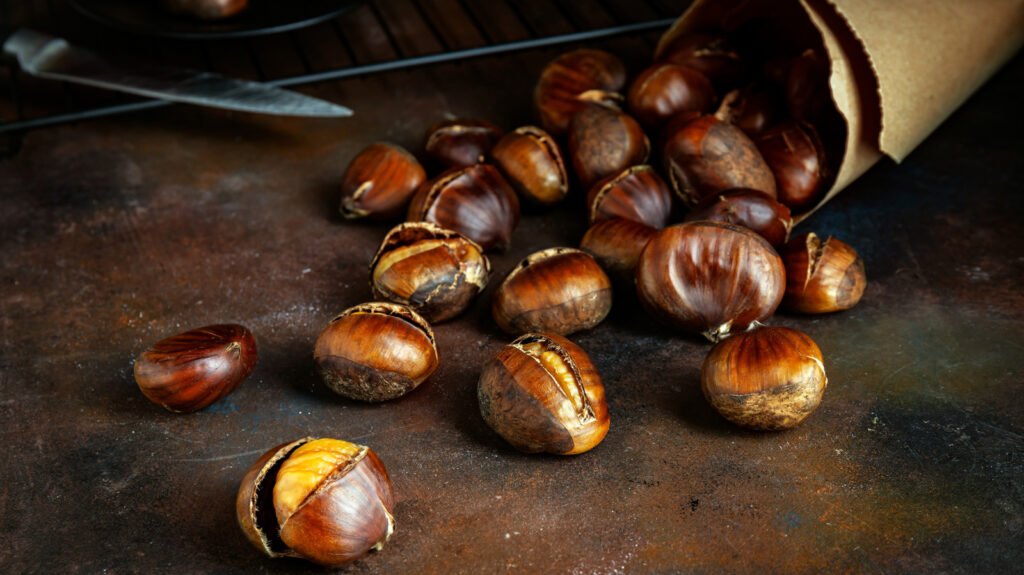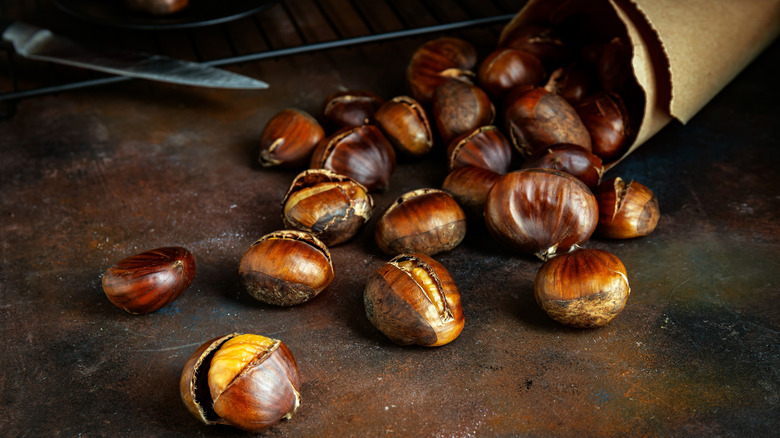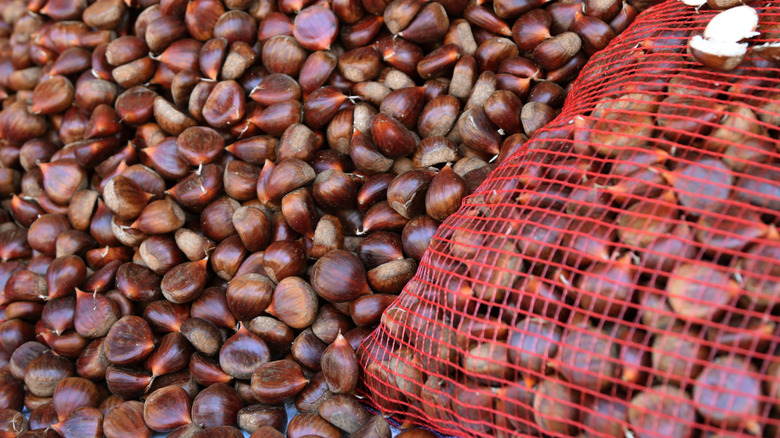“Chestnuts roasting in an apartment oven,” or however the classic Christmas song goes. While you might not want to fuss with an open fire, you can still cook up the holiday season’s favorite snack, scent, and song subject at home. Chestnuts are a long-time part of the symbolism of the holidays, as the toasted treat has been associated with winter celebrations in the United States for centuries. When cooked, these nuts soften, turn golden brown, and begin to emit an earthy sweetness akin to roasted sweet potatoes — no wonder they’re the stuff of Christmas carols.
Before you can pop any chestnuts in the oven, your cooking prep starts at the grocery store. Look for shells with a smooth finish and no surface blemishes. Once in the kitchen, it’s important to carefully create a slit through the shell. Scoring the chestnuts will prevent them from exploding as they roast. You can put them in the oven for 25-30 minutes at about 400 degrees Fahrenheit. Keep an eye on your roasting chestnuts, though, as cook time differs based on size.
Chestnuts can be eaten on their own or incorporated into desserts like a chestnut Mont Blanc. The hearty nut also pairs well with another lyrical dish: turkey, and makes for a sweet, textured addition to your traditional holiday stuffing. Note that if you plan to store any chestnuts for future seasonal feasts, you can make the nuts last longer by freezing them.
How chestnuts became a classic holiday staple
Chestnuts are the tender fruits from types of deciduous trees that belong to the beech family. The nuts grow in groups, shrouded by a spindly, pronged husk. The plant is at home in the Northern Hemisphere, and for a time, its fruit was a generally popular ingredient in cooking. The nut’s harvest season, from October through December, also aligns with end-of-year festivities, which contributed to it becoming a component of classic Christmas foods, from stuffing to soup.
Chestnut trees aren’t nearly as abundant as they once were in the United States. Their numbers began to dwindle in the early 1900s, when an aggressive blight was introduced to the region and subsequently tore through the chestnut tree population on the East Coast. While not as ubiquitous today, you can still find piles of hot roasted chestnuts on city food carts, infusing the cold air with their cloying perfume. And, of course, chestnuts are pretty simple to roast yourself in your oven at home.





